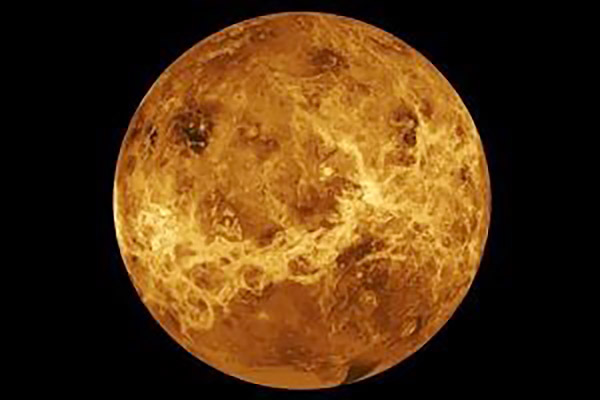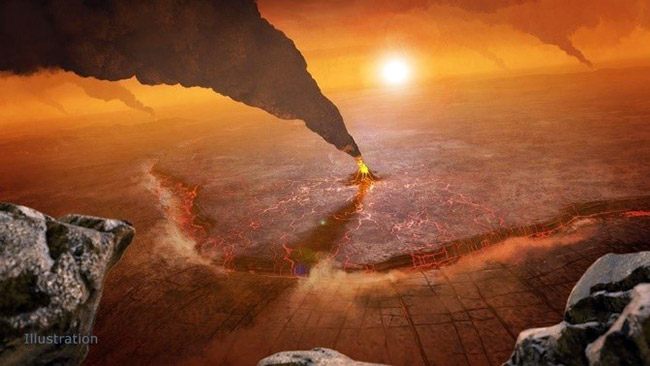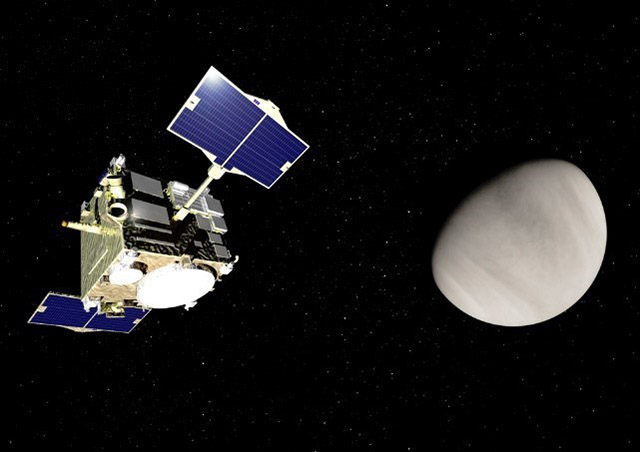Venus, which shines brightly in the evening and at dawn, has been known since ancient times as the Morning and Evening star. Although Venus is the closest planet to Earth it often fails to grab our attention when compared to Mars, which is crowded with probes and where interest in whether life exists or not is growing. Meanwhile, NASA announced this month that it would launch two Venus probes in 2028-30. The agency will attempt to make detailed observations of the atmosphere and geology. Japan's AKATSUKI is the only probe currently operating on Venus, but this will be the first attempt in about 35 years for the U.S.
Siblings full of wonder

(Provided by NASA)
Venus is a rocky planet that orbits just inside the Earth. It is the closest planet to Earth, with a distance of 39.5 million kilometers, compared to Mars's 55.8 million kilometers at the closest point of its orbit. It is similar in size and weight to Earth and has identical internal structures, so the two are sometimes referred to as twin siblings.
However, the true identity of Venus is full of wonders. It is covered with a thick carbon dioxide atmosphere, and sulfuric acid clouds prevent sunlight from reaching its surface. The surface is a burning hell of 90 times the atmospheric pressure of Earth and 460 degrees Celsius. In the upper layers of the atmosphere blows a strong wind or "super-rotation", at a speed of 100 meters per second. The planet rotates in the opposite direction to the other planets in the solar system, including Earth. It also has a rotation period that is longer than other planets, with approximately 225 days in orbit and a rotational period of 243 earth days.
In contrast to Earth, which is full of life, Venus is rough and harsh. How did these two siblings become so different from each other? If we find the cause, we will better understand Earth, not to mention Venus itself.

(Provided by Peter Rubin, NASA)
An exploration of the atmosphere and geology in detail
The newly selected probes are "Da Vinci Plus" and "Veritas." Da Vinci Plus consists of an orbiter that will make multiple approaches to Venus and a spherical device that will observe the planet while plunging through the atmosphere. By studying the atmospheric composition in detail, the probe aims to reveal the history of Venus and the cause of the surface becoming a burning hell. They say that a sea of water capable of supporting life once existed on Venus for billions of years, whose verification is also an issue. Da Vinci Plus will also try taking high-resolution images of the complexly deformed highlands called "Tessera." This mission will be the first time since the former Soviet Union in 1985 that a probe plunges into the atmosphere of Venus to explore it.
Veritas is an orbiter, which will study the topography of almost the entire surface of Venus and create a three-dimensional map through radar observations. It will also explore the planet's geological history and see if mechanisms such as plate tectonics and volcanic activity still exist today. Infrared observations will help reveal the distribution of rocks. Veritas will also explore the mystery of the formation of Tessera together with Da Vinci Plus.

(Provided by NASA)
Both probes were selected as part of NASA's "Discovery Project," which was launched in the 1990s to explore the solar system in a low-cost and highly efficient manner. The budget for each is about $500 million USD (about 55 billion yen). They both lost to two other asteroid probes in the previous selection in 2017 but got chosen among four finalists on the 2nd of June 2021. This time the concept of a probe that would examine Jupiter's moon Io and a probe that would explore Neptune and its satellite Triton were unsuccessful.
In response to the decision, NASA's Science Director Thomas Zurbuchen said, "Using cutting-edge technologies that NASA has developed and refined over many years of missions and technology programs, we're ushering in a new decade of Venus to understand how an Earth-like planet can become a hothouse. Our goals are profound. It is not just understanding the evolution of planets and habitability in our own solar system, but extending beyond these boundaries to exoplanets".
Interest in the solar system, not just the moon and Mars

(Provided by JAXA)
Venus was one of the stages of the space development race between the U.S. and the Soviet Union during the Cold War, but it is undeniable that the fever has since died. After entering this century, "Venus Express," a European orbiter, explored Venus from 2006 to 2014. At present, AKATSUKI is the only spacecraft that continues to operate as it attempts to solve the mysteries of the atmosphere and super-rotation. The orbiter "Magellan," which operated from 1990 to 1994, was the last to explore the planet for the U.S. That contrasts with the "newcomers," such as the United Arab Emirates (UAE) and China, who have successfully explored Mars this year and keep providing topics of discussion.
This is because it is challenging to develop observation devices that can withstand the high temperatures and pressures of Venus for a long time and probably because the difficulty level of injecting an object into the orbit of an inner planet is technically higher than an outer planet. It is natural for us to focus more on Mars, of which future manned exploration is coming into sight.
Junya Terazono, a planetary scientist who is familiar with solar system exploration, commented on NASA's new plan, "In the 1960s and 1970s, Venus exploration was the sole domain of the former Soviet Union, and since then, there has been poor achievement. The selection of two Venus explorers may seem abrupt, but it may be aiming to clearly demonstrate that NASA is interested in the entire solar system, not just the Moon and Mars."
Following NASA, the European Space Agency (ESA) announced on the 10 of June that it had decided on a Venus probe called "EnVision". It will be launched in the early 2030s and "provide a complete picture of Venus from its central core to its upper atmosphere to examine how and why Venus and Earth evolved in such different ways."
Suppose the results of the AKATSUKI mission continue to come out in thesis form, and the Da Vinci Plus, Veritas, and EnVision mission results are added to them. In that case, the actual form of Venus, which has been full of mysteries, will gradually become more apparent. Ten or twenty years from now, humankind may look up at the Morning star and Evening star with a slightly different feeling than we do now.
Original article was provided by the Science Portal and has been translated by Science Japan.




